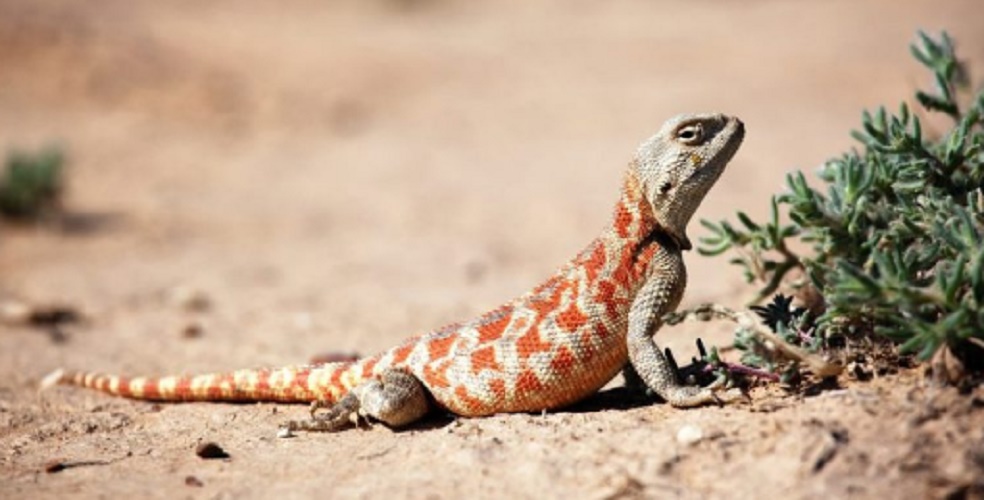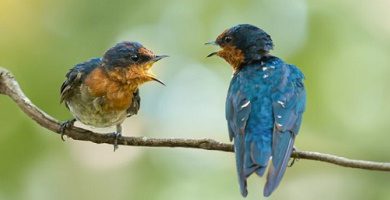What is a terrestrial ecosystem?
We explain what a terrestrial ecosystem is and the main characteristics of this biome. In addition, how it is classified and examples.
-
What is a terrestrial ecosystem?
Terrestrial ecosystems are those ecosystems that take place on firm ground and in the air , or in geographical accidents ( mountains , etc.), places where they find everything they need to be born, grow and reproduce.
They are distinguished from aquatic and mixed ecosystems in that they do not have a predominance of large bodies of water , such as lakes, rivers or seas. Even so, they have different ranges of rainfall, depending on their geographical and climatic characteristics.
The terrestrial fauna, thus, has adapted millions of years ago to the stiffness of the soil and the drought of the air (compared to the water where it originated), through solid limbs for walking, instead of swimming, and skins with the ability to own humidification, not to dry out. Flying, terrestrial and underground animals cohabit in terrestrial ecosystems .
Similarly, these ecosystems are some of the most affected by pollution and the incidence of human activities, such as logging, urban expansion or the accumulation of solid waste.
-
Characteristics of a terrestrial ecosystem

The water is a factor of prime importance for life on terrestrial ecosystems, as only receive from the rain, which in some environments may be very low.
However, life on earth has other advantages such as the greater presence of light and the cleanliness of the environment , as well as huge platforms where plant life grows to heights and a great climatic and topographic diversity.
At the same time, in terrestrial ecosystems the wind is the main agent of erosion , as well as transport of certain species, and in them the plant life coexists with the animal, the fungal, the microbiological and the amphibious. In the jungles, for example, biodiversity reaches some of its greatest known limits.
-
Types of terrestrial ecosystems
Terrestrial ecosystems are abundant, and can be classified according to their climatic characteristics and the abiotic factors present in them:
- Aggregates . Those of low incidence of precipitation and therefore enormous drought, with high temperatures during the day and low at night (or low and even lower, such as the Antarctic polar desert) and difficult conditions for life. There is usually little vegetation and very specialized life to the conditions.
- Grasslands . Ecosystems of low vegetation and usually in plains, flooding or not during the rainy season, in which animal life abounds and there is usually great climatic variation during the seasons.
- Sylvan . They usually have large accumulations of dense vegetation, large, with very low undergrowth and huge accumulations of organic matter. They are hot springs of life, with thousands of species of all kinds and hot and humid climatic cycles, usual in Ecuador.
- Mountainous . Usually mixed, combining other ecosystems but tending towards the arid as it rises in the mountain, given the drop in oxygen and temperatures.
-
Examples of terrestrial ecosystem

Some terrestrial ecosystems are:
- Hot deserts . Arid ecosystems par excellence, with xerophytic vegetation adapted to extreme daytime heat and very little precipitation, but with avery particular fauna that takes refuge from heat as much as possible. They currently occupy a third of the planet Earth in total.
- Tropical moist forest . Located in the regions of the equator of America and Africa, these are huge agglomerations of plant and animal life, in closed habitats and abundant rainfall. They usually occur in hot regions, with no seasons beyond a dry and rainy season. They are the regions with more biodiversity on the planet.
- Grassland . Also called grasslands or prairies , they are ecosystems in which a herbaceous vegetation predominates, that is, of low-lying grasses. They usually occur in places of low rainfall and temperate temperatures, with intense summers and cold winters.
- Taiga . Also calledboreal forest or coniferous forest, these are large closed formations of tall vegetation, considered the largest forest mass on the planet. They are located in the cold areas of northern Russia and Siberia, in northern Canada and Europe, and have temperatures of 19 ° C in summer and -30 ° C in winter, that is, a huge thermal variation. Its fauna is composed of small mammals and land and air predators, mainly.





